The Riotoro Prism CR1280 Case Review
by E. Fylladitakis on April 26, 2016 9:01 AM ESTThe Exterior of the Riotoro Prism CR1280
The Prism CR1280 sports a postmodern design, mostly based on complex geometric shapes with sharp angles and edges. Most of the case is black, with the exception of the silver aluminum feet. The steel frame and right side panel of the case are well sprayed with a matte black paint, as is the front part of the plastic faceplate. The surrounding frame of the plastic faceplate is sprayed with a highly reflective piano black paint. As for the left side panel, it is entirely made out of Plexiglas, creating an essentially frameless left side panel window.
Measuring 58 cm tall, 22.5 cm wide and 47.5 cm deep (22.8 × 8.7 × 18.7-inches), the Prism CR1280 is a relatively large tower case, especially for a model without a single external 5.25" device opening. With a volume of 0.062 m3 (62 liters), it is only slightly smaller than the similar Cooler Master MasterCase 5 (65.9 liters) and the cubic Corsair Carbide Air 540 (63.1 liters), but much larger than a typical Midi ATX case, such as the Corsair 450D (51.6 liters). Despite the size, the Prism CR1280 is relatively lightweight, tipping the scales at just 8 kg.
11.2 oz/330 ml soda can inserted as size reference
A look at the rear of the case reveals that the PSU compartment is located at its bottom, with a significant distance between it and the main system. Other than that, there is nothing of noteworthy to be discussed about the rear side of the Prism CR1280, except perhaps the observation that there are no round holes for liquid cooling systems and cables.
Riotoro placed the front I/O ports and buttons at the top front of the case, on a slightly tilted surface. Considering that the case is rather tall, the position of the buttons and I/O ports clearly favors placement under a desk, which makes the use of a windowed side panel rather questionable. The larger power-on button can be seen to the left, followed by the RGB lighting and the fan speed control switches. The 3.5 mm audio jacks can be seen at the center of the formation, with the four USB ports (2 × USB 2.0, 2 × USB 3.0) to their right. A strangely large reset key rests to the rightmost part of the formation.
A Plexiglas cover can also be found at the top of the case, made of the same material as the side panel, just a little thinner. It actually has no specific function other than being a slight aesthetic decoration if the Prism CR1280 is left as is from the factory. However, we found that if the RGB fans are moved to the top of the case, the Plexiglas will absorb part of their light and appear as if the top of the case is being illuminated, creating a nice visual effect inside dark rooms.
Two large nylon filters can be found at the bottom of the case, one for the PSU and one for the HDD area. The PSU filter can be removed by pulling it from the back of the case, the HDD area filter from the front. The entire faceplate acts as a filter for the front intake fans as well but, strangely, the filter is not removable. The whole panel needs to come off and cleaned by using a strong blower or vacuum cleaner.
The large aluminum feet of the Prism CR1280 are very strong and add to the overall aesthetic value of the case. Rubber strips are installed to prevent the case from moving/sliding on a flat surface, as well as to prevent damaging softer surfaces. That being said, the edges of these aluminum feet are extremely sharp and can easily damage wooden, vinyl and other soft surfaces. Caution is required when handling the case while it is sitting on any soft surface, lifting it straight up and without tilting the case to any side, otherwise the very hard and sharp corners can easily damage the surface.
The I/O ports are surrounded by a plastic clear ring that is illuminated by several LEDs that provide very good and uniform distribution of the light. Riotoro's logo at the lower part of the faceplate is also illuminated, as the two included 120 mm cooling fans are.
When fully lit, the lighting of the Prism CR1280 is adequate as far as the faceplate and I/O area are concerned, but relatively weak to the interior of the case. There is only so much that half a dozen LEDs can do inside a case this large. The RGB lighting can be controlled by the button found at the top of the faceplate. It is almost amusing that the RGB button is right next to the power button, as one could imagine accidentally hitting the power button by accident.
The RGB capabilities of the Prism CR1280 are adequate, especially considering that there is no USB interface and everything is being controlled via a single button. Riotoro programmed the controller to have eight settings and the button simply cycles through them. The first six settings are standard colors (Red, Green, Blue, White, Yellow and Pink) and the seventh setting initiates the “rainbow” effect, slowly cycling through 256 colors. The eight setting is the “custom color” setting and simply holds whichever color was active on the “rainbow” setting when the button was pressed. If the button is pressed for three seconds, the controller turns the lighting off.


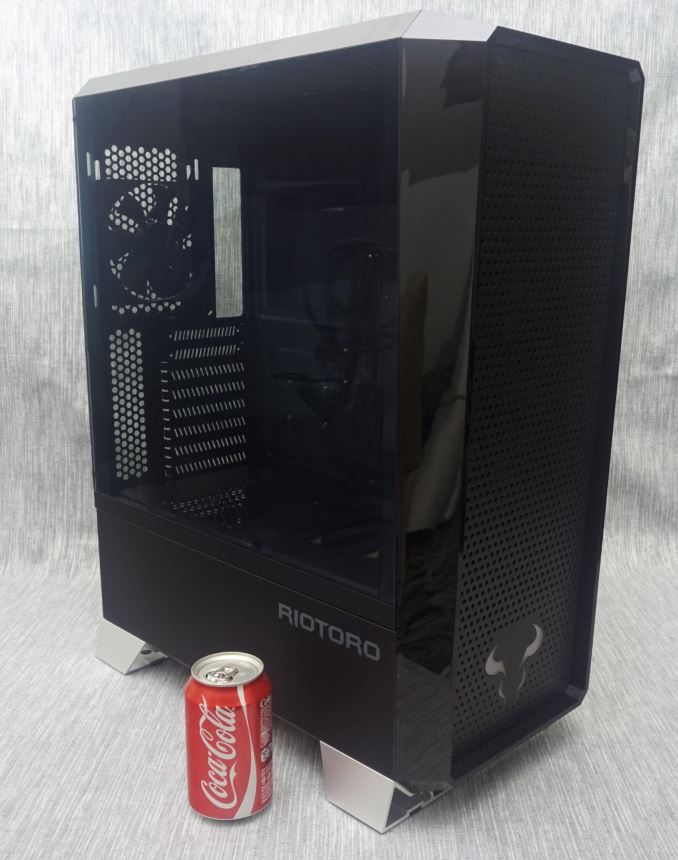
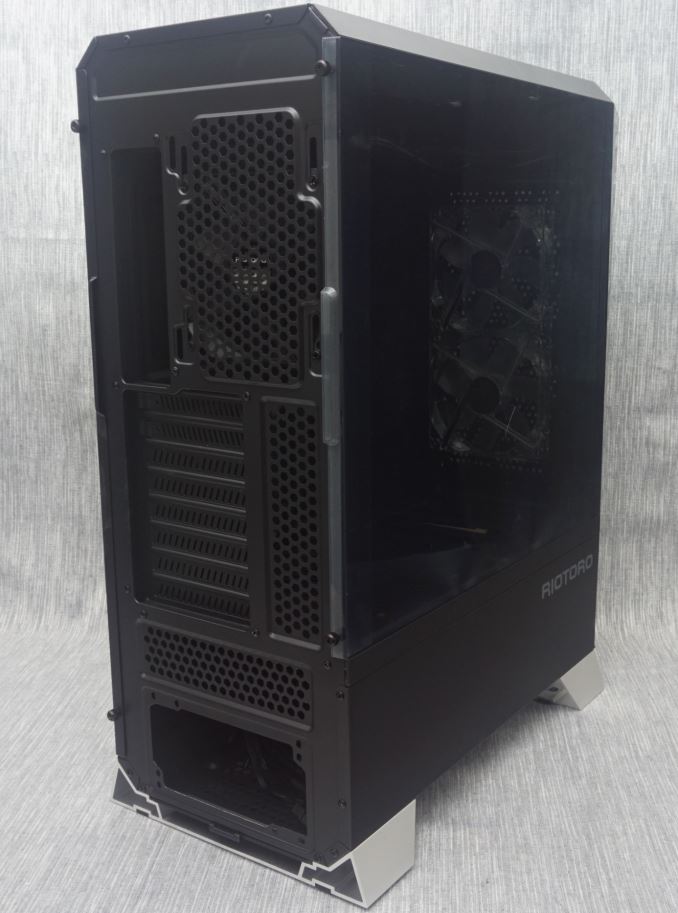

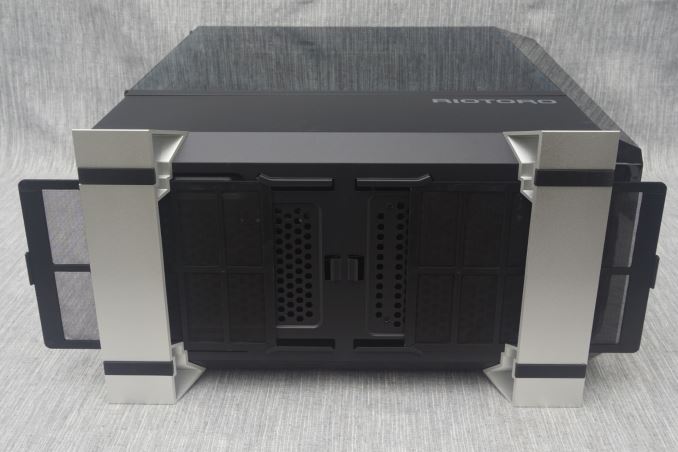
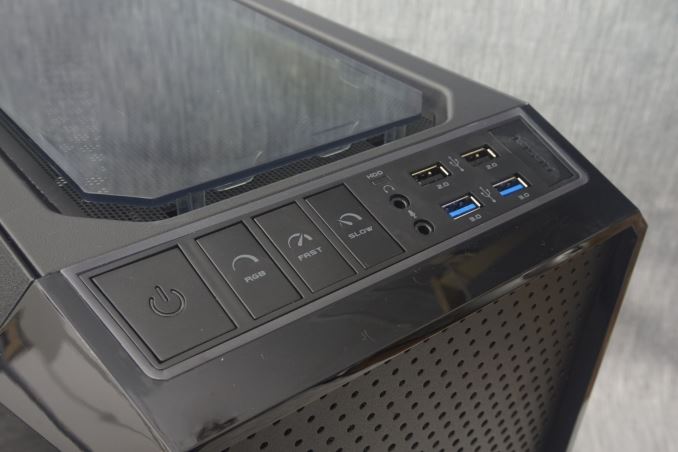
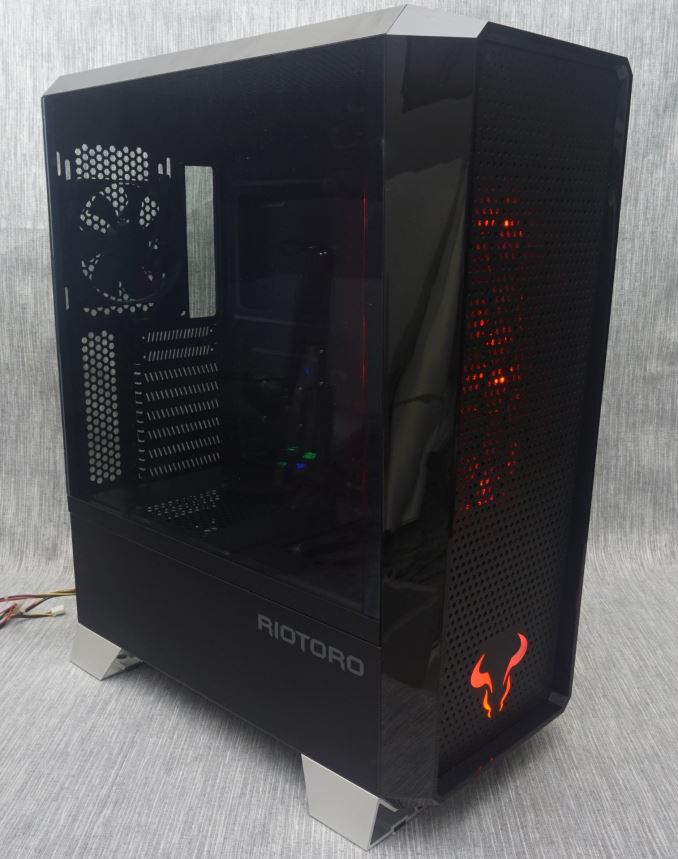








20 Comments
View All Comments
jasonelmore - Tuesday, April 26, 2016 - link
If i was making a case today, i'd have a array of 2X USB type c's on the front panel. no way i'm buying a case without them these days, when next year, pretty much all mid-range to high end will have it.subtec - Saturday, April 30, 2016 - link
Where would you plug them in?Taristin - Tuesday, April 26, 2016 - link
The interior reminds me a lot of my Phanteks Evolv full ATX case. But those similarities are probably common to many cases, eh?Galcobar - Tuesday, April 26, 2016 - link
The site's copy editor seems to go missing every few months, I fear he or she has disappeared again. There's a few extraneous word, or just the wrong ones (albeit correctly spelled), used in a few places on the first page already.Otherwise, an interesting read so far. The flow of these case and PSU reviews is notably smoother than they used to be, without diminishing the amount of information.
Impulses - Tuesday, April 26, 2016 - link
On a slightly pedantic note, Riotoro (ignoring the fact that it's two words mashed together) doesn't translate to Bull's River but to Bull River... Rio Del Toro would be Bull's River (de being the possessive).On a slightly less pedantic note... I'm not aware of a Rio Toro here in Puerto Rico, there's a Rio Toro Negro (Black Bull River) and a park under the same name tho (and Toro Verde too, which means green).
Quick Google search reveals there is a Rio Toro in Costa Rica tho, common rafting destination apparently. Could be what the name alludes to if the company has a South American distribution arm, since Puerto Rico isn't in SA and all...
E.Fyll - Wednesday, April 27, 2016 - link
I actually was not aware of the one in Costa Rica. I learned something new today.https://en.wikipedia.org/wiki/R%C3%ADo_Toro
Also, I specifically wrote that "Bull's River" is a rough translation, because "Bull River" just does not make any sense to me. Well, not any more sense than any two random nouns placed together. I do not pretend to be a linguist though and my Spanish is pretty horrible, so you are probably right.
Lolimaster - Wednesday, April 27, 2016 - link
Rio Toro / Bull River make sense in spanish.And "rio toro" and "rio del toro" can be assumed as the same thing for a spanish speaker but semantically it is not and they know.
Impulses - Wednesday, April 27, 2016 - link
BTW, wasn't criticising or taking issue with your writing Fyll, just making a note since I found it interesting... It's just semantics in the end.DominionSeraph - Wednesday, April 27, 2016 - link
No external bays?I want Anandtech to start benching these cases against the cardboard box they came in.
darkfalz - Wednesday, April 27, 2016 - link
No airflow over the HDDs too...